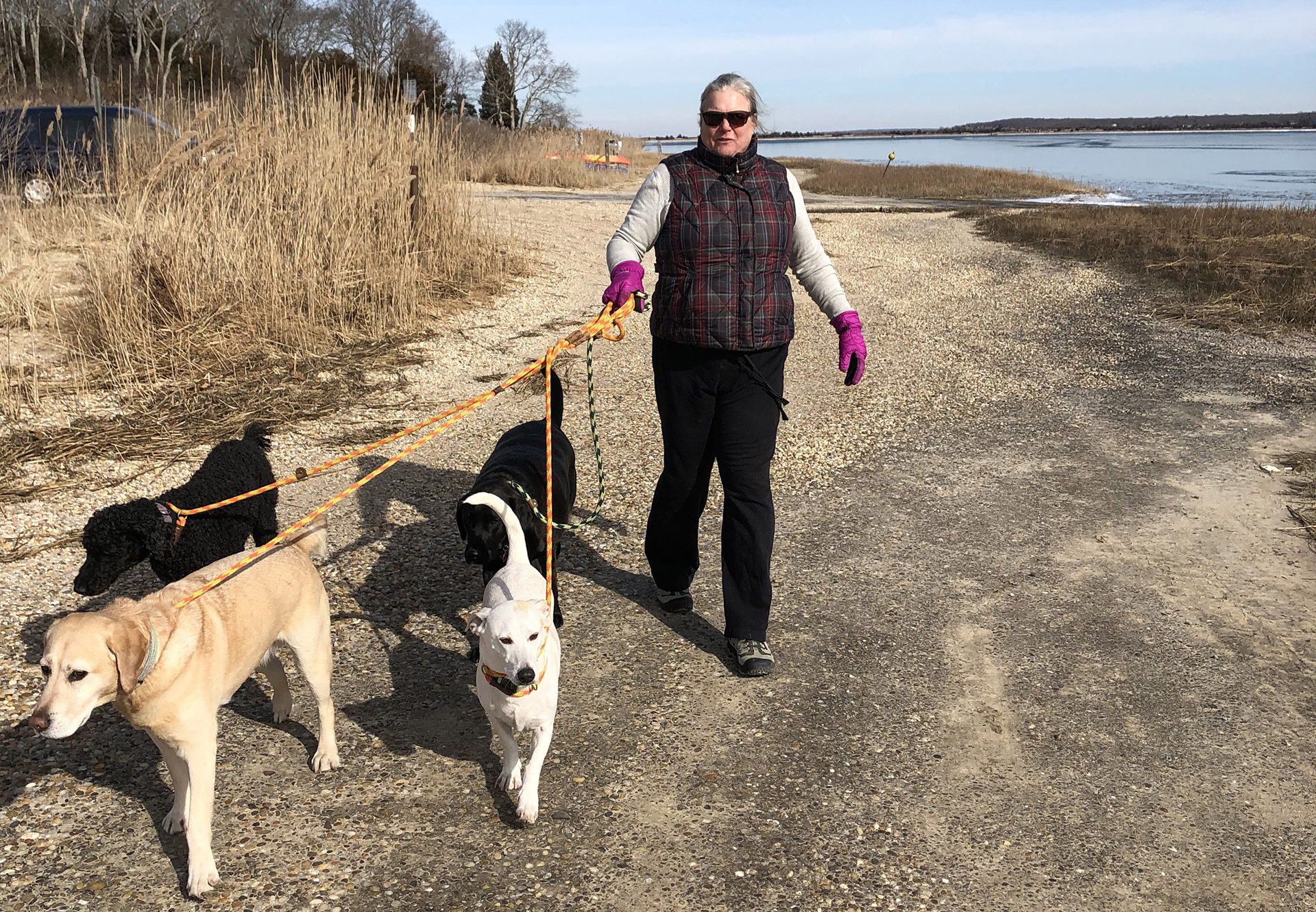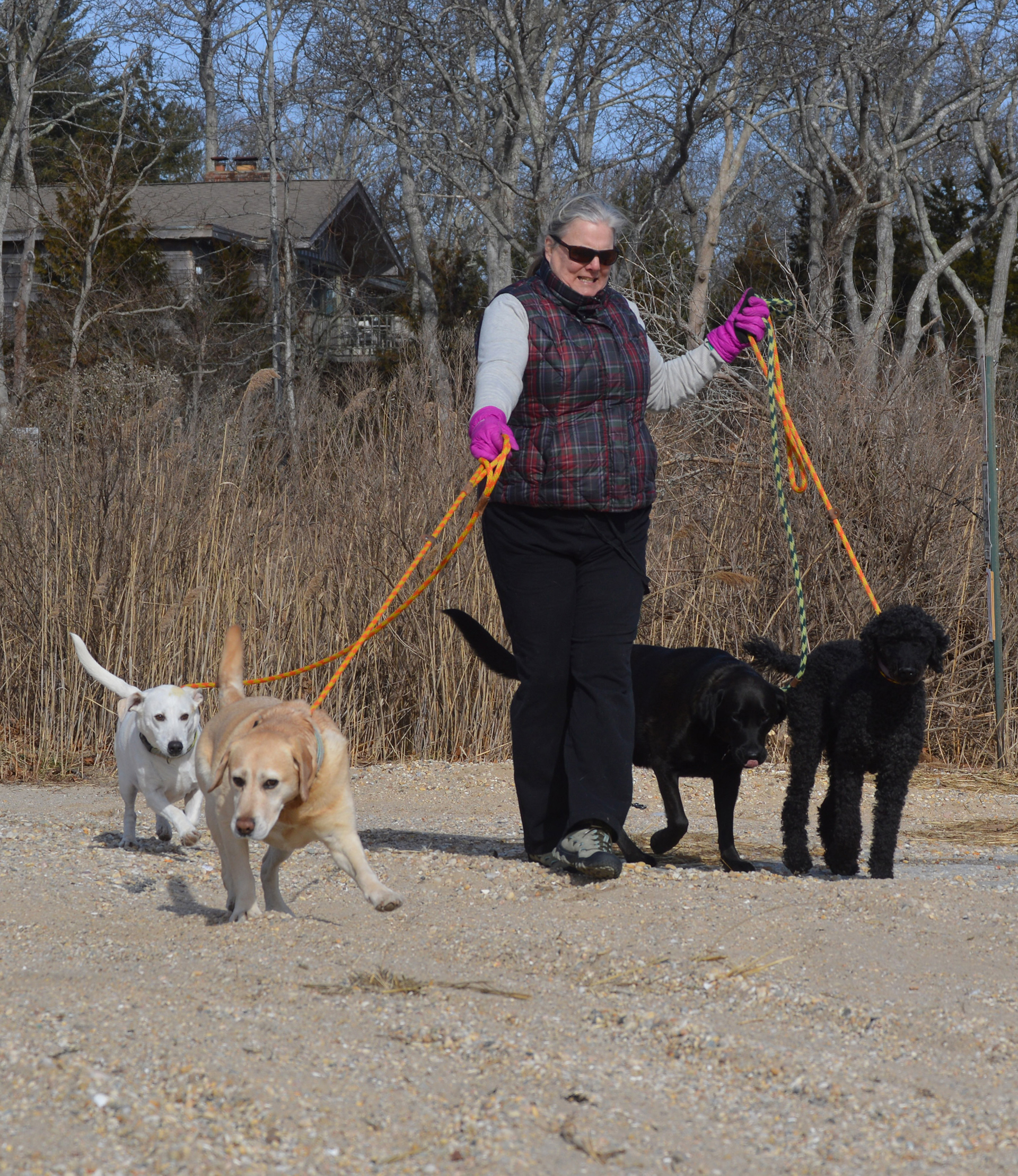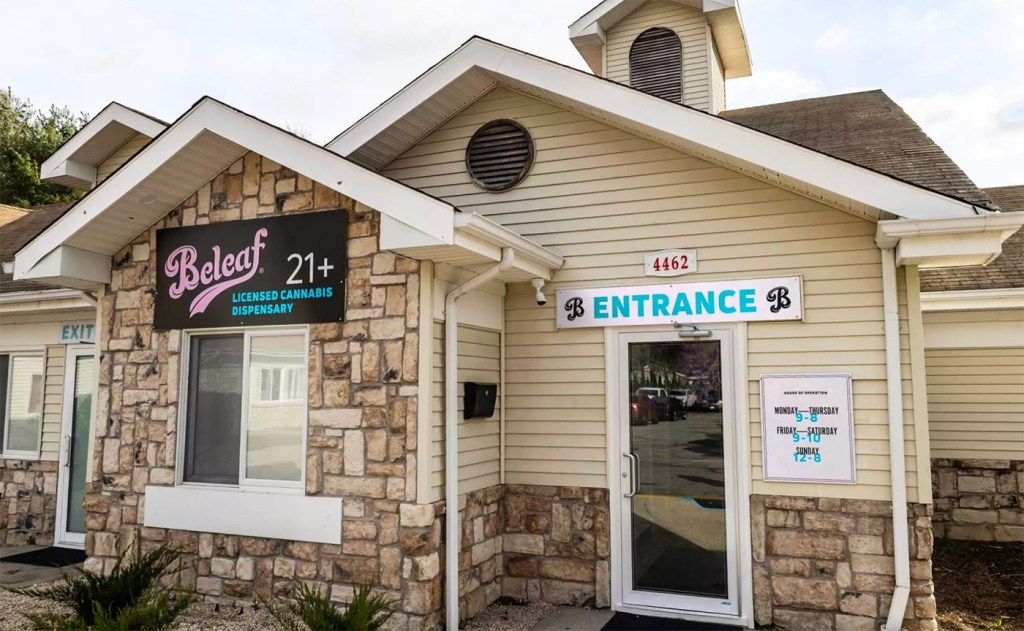Town Tries To Tighten Leash On Home Business


Is East Hampton Town going to the dogs or are the neighbors barking up the wrong tree? That’s the question, more or less, that the East Hampton Town Zoning Board of Appeals is being asked to decide over the business Lori Marsden runs out of her home on Saddle Lane in Northwest Woods. Marsden is a professional dog walker.
“Doggie daycare is not illegal,” her attorney, Carl Irace, told the ZBA during a January 29 public hearing to appeal a determination made by Ann Glennon, the town’s head building inspector.
Marsden was first charged with a misdemeanor in July 2017 by the town, which claimed her dog walking business was not a legal use of her premises. When he took over the case, Irace asked Glennon to weigh in on the matter. But when he received her letter dated July 11, 2018, he found himself at odds with her findings.
Glennon cited the guidelines in the code for businesses run from home, including that there should be “no external evidence of the activity, including audible noise.” Since Marsden takes the dogs out of the house and off the property for walks, that would signify external evidence of the business, making it illegal, Glennon concluded.
Marsden came to her profession after growing up with animals in Alabama. “Cats and dogs, and riding horses,” she said Saturday. After she and her husband moved into their Saddle Lane house, she tried different lines of work, none of which paid well. That was when she turned to dog walking.
When her clients leave town, they leave their dogs with her to watch. She told the ZBA on January 29 that, besides her own two dogs, she usually has one or two other dogs staying with her.
“There are 57 people listed in East Hampton as pet sitters,” along with many more that live and work in the other hamlets that comprise the town, Irace told the board. If the ZBA were to uphold Glennon’s determination, all those dog walkers could find themselves out of work, or, worse yet, in court. “You would have to get site plan review to become a dog sitter,” Irace said.
Board members asked Irace about dogs barking. Would that not constitute external evidence of the business? Irace compared dog walking and doggie daycare to other businesses. For example, if Marsden was a music teacher, neighbors might see teenagers carrying tubas into the house and playing them once inside. “She has been operating her business for over 12 years without any incidents or complaints,” Irace told the ZBA.
It is not clear what precipitated the town’s decision to charge Marsden. There have been no noise complaints registered over the past few years,
according to town police records.
Several people spoke or wrote letters in support of Marsden. The former executive director of the Animal Rescue Fund of the Hamptons, Sara Davison, described Marsden as “a conscientious, careful, and very knowledgeable person in her work with dogs.” Davison said that her dog is epileptic, and that Marsden is capable, when needed, to administer prescribed drugs to the animal. “My dog is happy there. He loves Lori and her family,” she added.
“Obviously people need to have their quiet enjoyment of their homes,” said Randall Parsons, a member of the East Hampton Town Planning Board, and a friend of Marsden’s. “But, on the other side of the scale, it is costly for residents to set up businesses outside the home,” adding that “they pay their taxes with revenue from this business.”
Amy Sullivan told the board that she is suffering from cancer, and has to go into the city every two weeks. She leaves her dog with Marsden when she goes for treatment. “I seriously don’t know what I would do without her,” she said.
Neighbor John Collier spoke against Marsden’s business. Collier, with his husband, Joseph Langdon, bought the house opposite and just down the road from Marsden’s at the end of 2015. “As the parents of two-year-old twins, we are greatly concerned for their safety with a dog facility operating across the street,” he said. If a dog got loose, Collier warned, it could endanger the neighborhood.
Living next door to Collier and Langdon, and directly opposite Marsden, are Richard Samson and Howard McGillin, who also bought their home in 2015. Collier explained to the ZBA on January 29 that Samson and McGillin were unable to attend the meeting that night. The board was presented by a letter from Samson, who wrote that “we have two dogs of our own, and the frequent barking noise from 10 Saddle Lane has made our dogs very agitated and caused them to bark.”
Two more neighbors, Karen and Richard Sloves, wrote to the board as well. They also live opposite Marsden. Their letter expresses concern over the possibility that the business might be expanded.
The ZBA members explored, briefly, the idea of limiting the number of dogs at the house at any one time. Irace reacted to the idea of dogs getting loose and becoming a menace by asking rhetorically if the next step would be to simply ban dogs from the town.
The board agreed to keep the record open for a couple of weeks, to allow Collier time to submit a recording of the dogs barking.
Marsden said in an interview on Saturday that years ago, when she first moved into the neighborhood, she had a dog named Armando. Armando was a mutt who liked to roam the neighborhood. Neighbors used to give the dog treats, to the point where Marsden had to put a sign on the increasingly overweight Armando’s collar asking that he not be fed.
“There were never any complaints,” Marsden recalled. “That is the way East Hampton used to be.”
t.e@indyeastend.com



